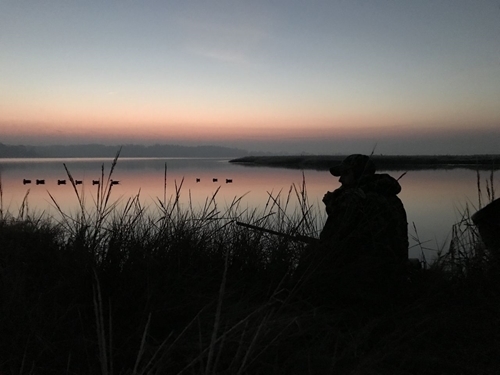4 Minute Read
By Mike Swan, GWCT Advisory Services

Last month I had an inkling of what would be imposed on the Morlais Valley Wildfowlers by Natural Resources Wales, but now I know. The words “death by a thousand cuts” come to mind.
I freely admit that I have a vested interest here; I have been a member of this South Wales club since it was formed back in the early 1980s, and I was wildfowling there before that, when the club ground was considered free foreshore, but please read on for what I hope is a dispassionate account.
Now, despite four decades of active conservation by the club, we are the victims of a ridiculously restrictive, and entirely unjustified ‘consent’ that fundamentally undermines wildfowling on this wonderful piece of the Burry Inlet.
Pintail have always been a key feature of this estuary, but in their wisdom Natural Resources Wales, have decided that we are no longer allowed to shoot them. The same applies to pochard and shoveller, neither of which have fallen to my lot in over 40 years of wildfowling out there.
Set against the hundreds that you can see out there on a normal winter’s day, the annual average of 22.7 pintail that we have shared between us since 2008 are clearly of no significance in population terms, but for me, and most of the club members they are of huge importance.
Wildfowling is not about killing ducks, so much as a magical spiritual experience of attempting to outwit some real wild birds in their own environment, and as part of this most of us value pintail more highly than any other duck. They are the wildest and most challenging, as well as being the most delicious.
Taking pintail away from us is a fundamental attack on wildfowling when there is no evidence that the few that we shoot make any difference to the local population. They are also one of the most nomadic of ducks, wandering widely in winter, so attempting to micro-manage them like this is doomed to failure.
Yes, if you plot the numbers shot over time, there is a small decline, but there are wide annual fluctuations, and if you ignore the bumper year of 2011, when we shot over 50, the graph looks a lot flatter.
To add insult to injury, NRW have also imposed a bag limit on wigeon, our most numerically important quarry. For this year, we are allowed 136 between us, and then we must stop shooting them.
This seemingly arbitrary number is an average of the five most recent normal seasons, leaving out covid lockdowns, and a season with an oil spill from a rail crash, when the club voluntarily suspended shooting. On the face of it a five year average could seem reasonable, but it is a recipe for declining bags, because there will be no above average years when the next limit is calculated and imposed upon us.
This restriction also piles an extra workload of daily collation of individual bag figures on hard pressed club officials, who are also expected to give NRW a monthly update. What is more, our consent is just for this year, with a new five year one to be negotiated next year, to run concurrently with another local club, incurring yet more work for the committee. The civil servants seem to forget that these good people are volunteers, who receive no remuneration for all this extra work.
All of this should also be set against a background of no change, and certainly no growth in wildfowling effort. The sixty or so members of the club are making an average of about four visits each per season, mostly for evening flight. Its no wonder that they are up in arms.